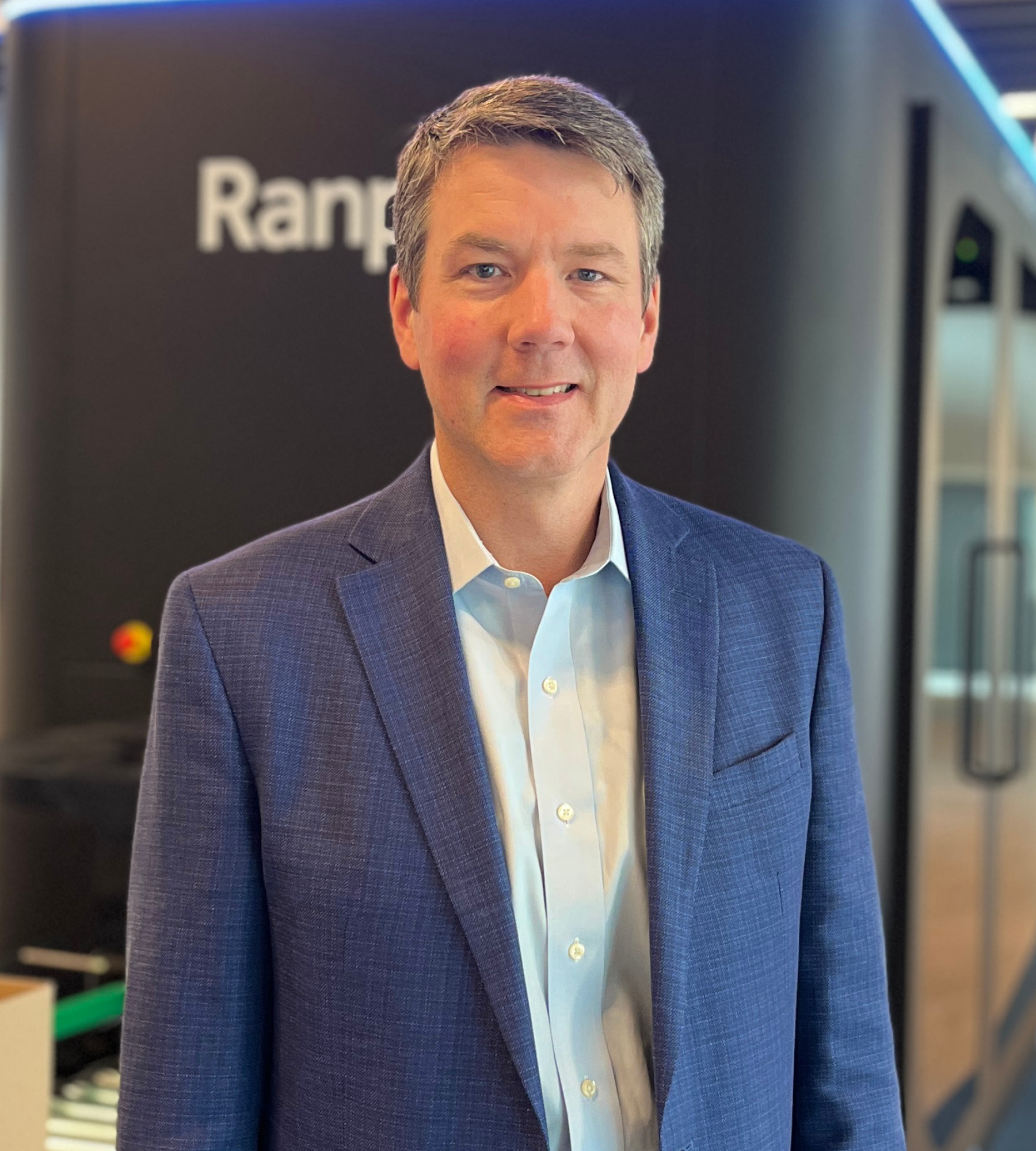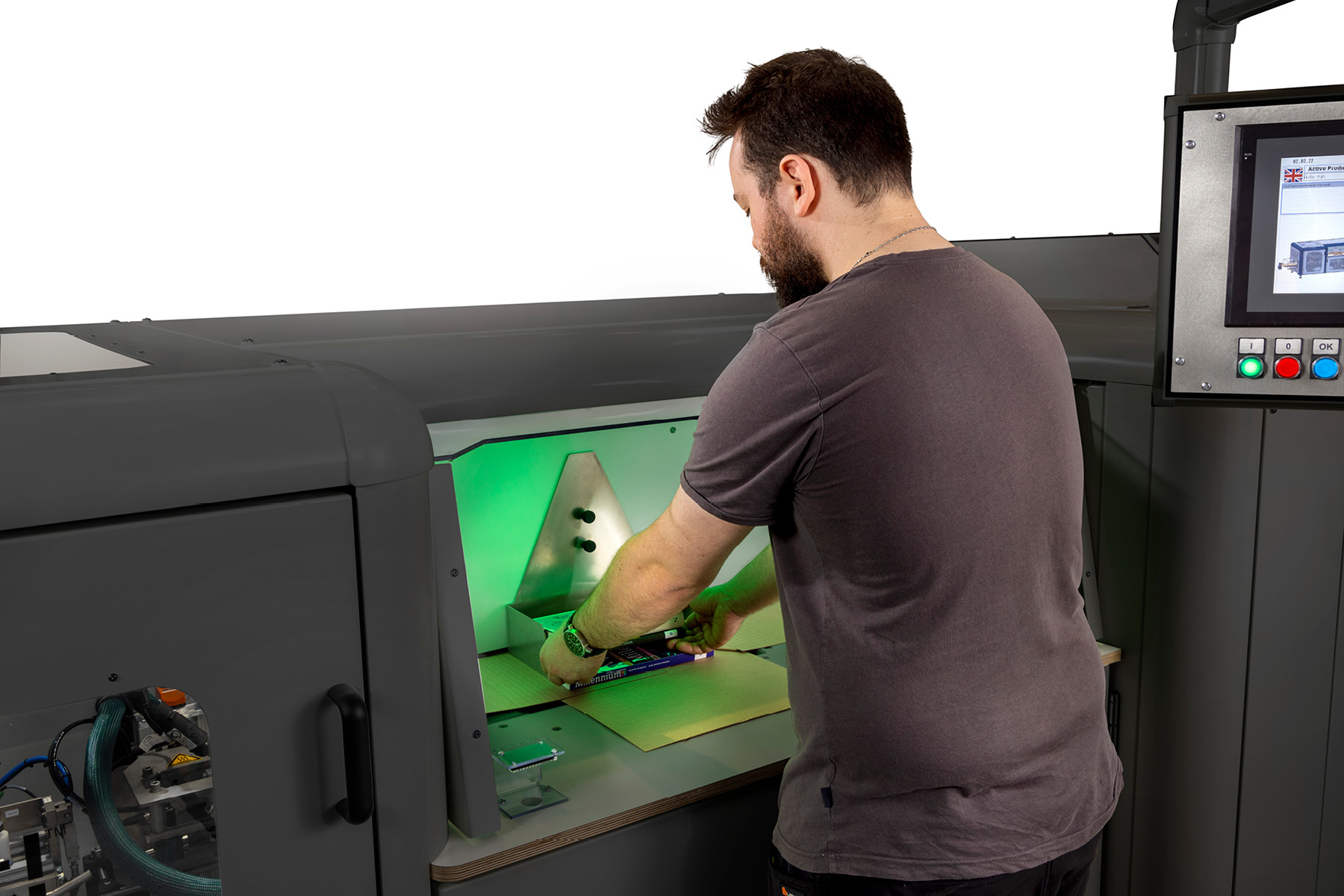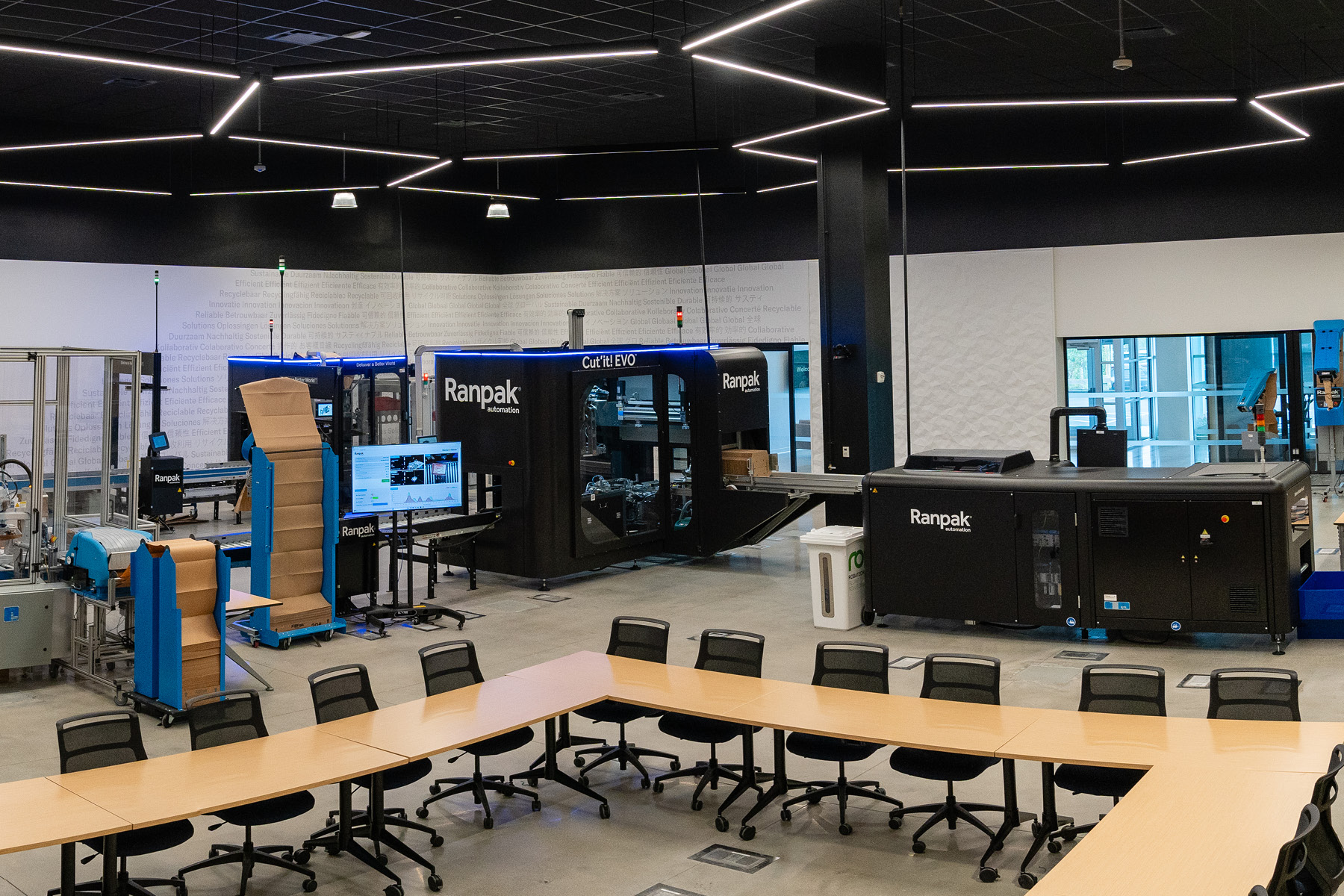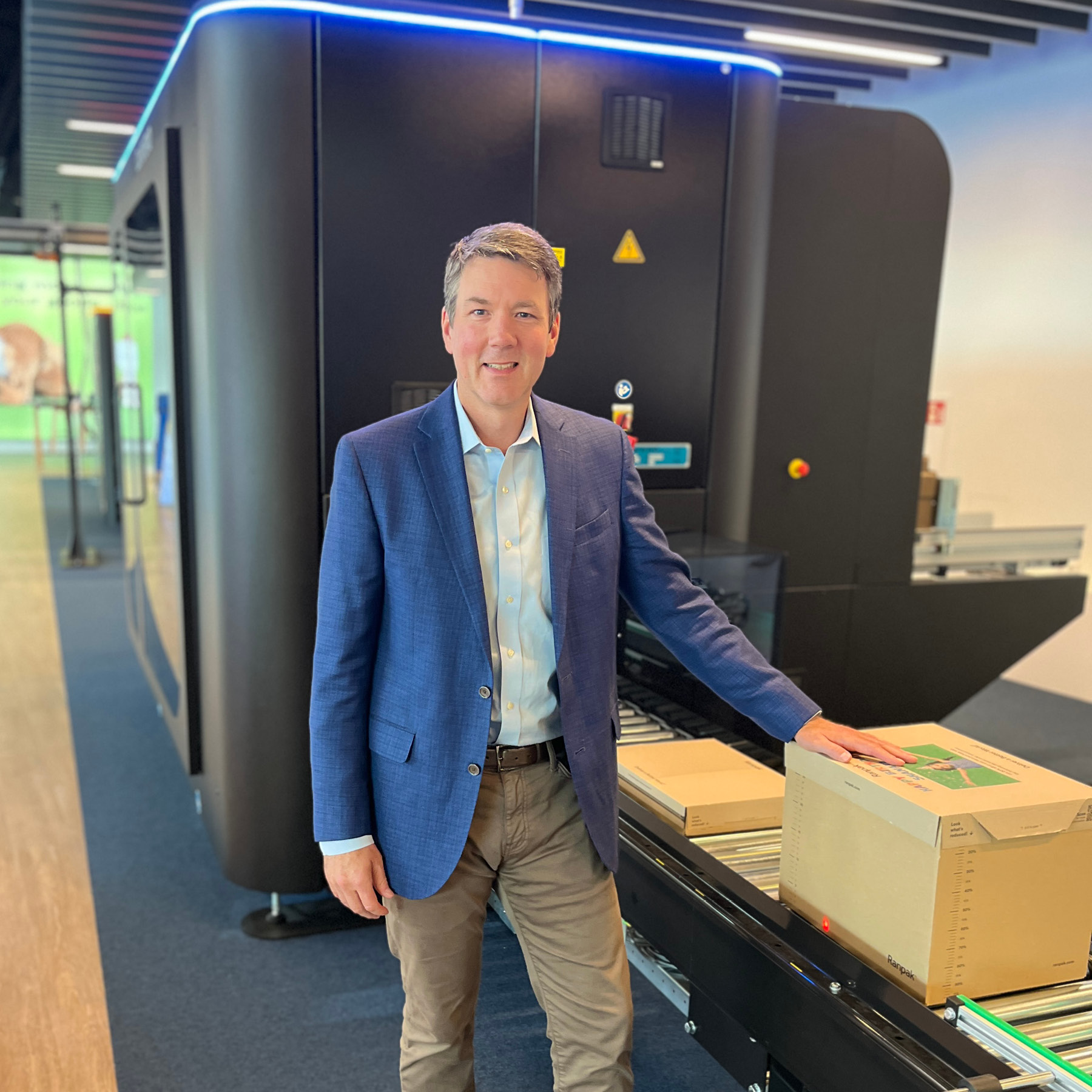Language
You can read the magazine in one of the following languages
Geolocation
You can read the global content or the content from your region

Achieving environmental sustainability can often seem like an elusive goal for companies to attain, as direct and tangible results are hard to come by. Moreover, the public tends to view bold promises in this area with some natural skepticism.
Ranpak, a paper-based packaging solutions company, is not in the business of paying lip service to sustainability and has been leading the way in the industry, with concrete results to show for all its efforts.
Bryan Boatner, Global Managing Director of Automation, reveals that last year alone, the firm’s paper void fill – a sustainable packaging material – helped prevent the use of 18.8 million kilograms of single-use plastic air pillows, which are traditionally used to fill empty spaces in shipping boxes. This is the equivalent mass of approximately 100 jumbo jets worth of plastic.
He describes how the company’s 50-plus year journey, from its very creation, has been rooted in delivering sustainable, paper-based packaging solutions that help customers reduce their reliance on harmful single-use plastics.
“For decades, Ranpak has been committed to expanding our product line and manufacturing processes to use paper, a renewable resource, to deliver a better world,” Boatner explains.
Boatner explains that despite the scale of the issue Ranpak is confronting, there are reasons to be optimistic.
“Plastic waste is one of the most pressing environmental issues we face today. Paper, as a renewable and eminently circular material, offers a viable alternative that can reduce the environmental footprint of packaging,” he says. “These products can help businesses pursue business and environmental protection objectives, which are growing increasingly aligned over the past few years.”

A packer inserts books into Ranpak’s Flap’it!, a machine that automates the packing of small products with minimal void and ultra-protective corners.
“Our automated functions are a key differentiator, as they help us to pursue our sustainability goals in a way that is scalable and replicable by our customers.”
With sustainability running through the veins of the company, it is no surprise that it is constantly exploring new ways to increase its impact through innovation. Recently it has invested heavily in automation, robotics, machine vision and AI in response to the growing global call to reduce plastic waste.
“For the past six years, we’ve also added packaging automation solutions to our portfolio as a way to continue to support efficiency for our customers in their sustainability journey,” he says.
“Our products apply across a range of industries, from clothes to car parts and everything in between. We’re proud to be a value-add to these organizations, as they work to shift from plastics to paper.”
Ranpak’s automated systems streamline various packaging processes, from material dispensing to right-sizing boxes to minimize wasted space and increase efficiency.
An example of their innovation is the Cut’it! EVO solution, which optimizes carton fill and reduces void space. Another example is the RecyCold® climaliner, a paper thermal liner that protects frozen, chilled and ambient products from temperature fluctuations for up to 72 hours by using recycled paper materials, ensuring packaging can endure multiple journeys.
“For our customers, this means faster, more efficient operations with less environmental impact, as our automated solutions help them use only the necessary amount of material for each package,” Boatner says. “In other words they’re saving time, money and other resources by adopting environmentally friendly packaging options.”
A strong commitment to innovation has attracted new customers and drawn back existing ones over and over again. “Our automated functions are a key differentiator, as they help us to pursue our sustainability goals in a way that is scalable and replicable by our customers,” he says.

The showroom at Ranpak Automation headquarters located in Shelton, Connecticut
“Every company has a role to play in driving the shift toward more sustainable practices; we take that role very seriously.”
“I like to frame this paradigm as capitalizing on the similarity of our environmental and business goals: We want to produce products and services that help customers package materials as efficiently and as quickly as possible. This approach allows us to offer packaging systems that not only protect the planet but also deliver measurable business benefits,” Boatner expands.
Ranpak is well-positioned in the industry to capitalize on the growing demand for more eco-friendly packaging by consumers, which has accelerated in the last few years, according to Boatner. For example, 76 percent of consumers in the United States prefer paper over plastic when it comes to their packaging solutions.
“Today, customers are no longer focused solely on what comes in the box. They’re attentive to the box and packaging, as well,” he says. “That’s why Ranpak provides innovative, paper-based solutions alongside automated equipment that helps producers protect, package and process orders in a way that reduces wasted time, material and space.
“For us this means continued growth and the opportunity to lead the market in providing sustainable solutions.”
Ranpak’s journey toward increased sustainability does not simply reflect the company’s values, but Boatner’s personal values as well.
“Every company has a role to play in driving the shift toward more sustainable practices, and at Ranpak, we take that role very seriously,” he says. “Sustainability is more than a business strategy; it’s a responsibility to our planet and our community. Producing less plastic reduces the amount that enters our waterways and oceans, and protects the people who rely on them.
“This is also personal – I have always believed in leaving something better than how you found it, and we at Ranpak have an opportunity to positively impact a more sustainable supply chain. As an avid skier and fly fisher, I enjoy the outdoors with friends and family, and knowing that Ranpak is working to help ensure a more sustainable future for the next generation is incredibly rewarding.”
It’s this wider mission that inspires and motivates him as a leader.

Bryan Boatner, Global Managing Director of Automation at Ranpak, poses in front of the Cut'it! EVO right-sizing machine
“This is also personal: I have always believed in leaving something better than how you found it.”
“Knowing that our work directly helps customers lessen their environmental impact gives me a strong sense of purpose. When you see titans of commerce like Amazon and Walmart shifting away from plastic packaging materials, it is vindication for the hard work we’ve done to provide scalable sustainable solutions.”
Although the company has made huge strides in the field, it is by no means complacent. Last year, 58 percent of its aggregate paper supply was composed of post-consumer waste, a significant achievement, which was reached seven years ahead of schedule. Additionally, in 2023, 86 percent of its raw paper supply was FSC-certified, a 32 percent increase year-over-year from 2022.
“We have a lot of work left to do but we are proud of our achievements so far. We plan to continue expanding our automation capabilities by investing in the technologies and people that make our company what it is,” Boatner says.
“I’m optimistic about the future. My hope is that Ranpak will continue to lead the way in sustainable packaging and automation technologies to accelerate its adoption, and continue to deliver innovative products and systems that not only meet but exceed the expectations of our customers and the demands of the moment.”